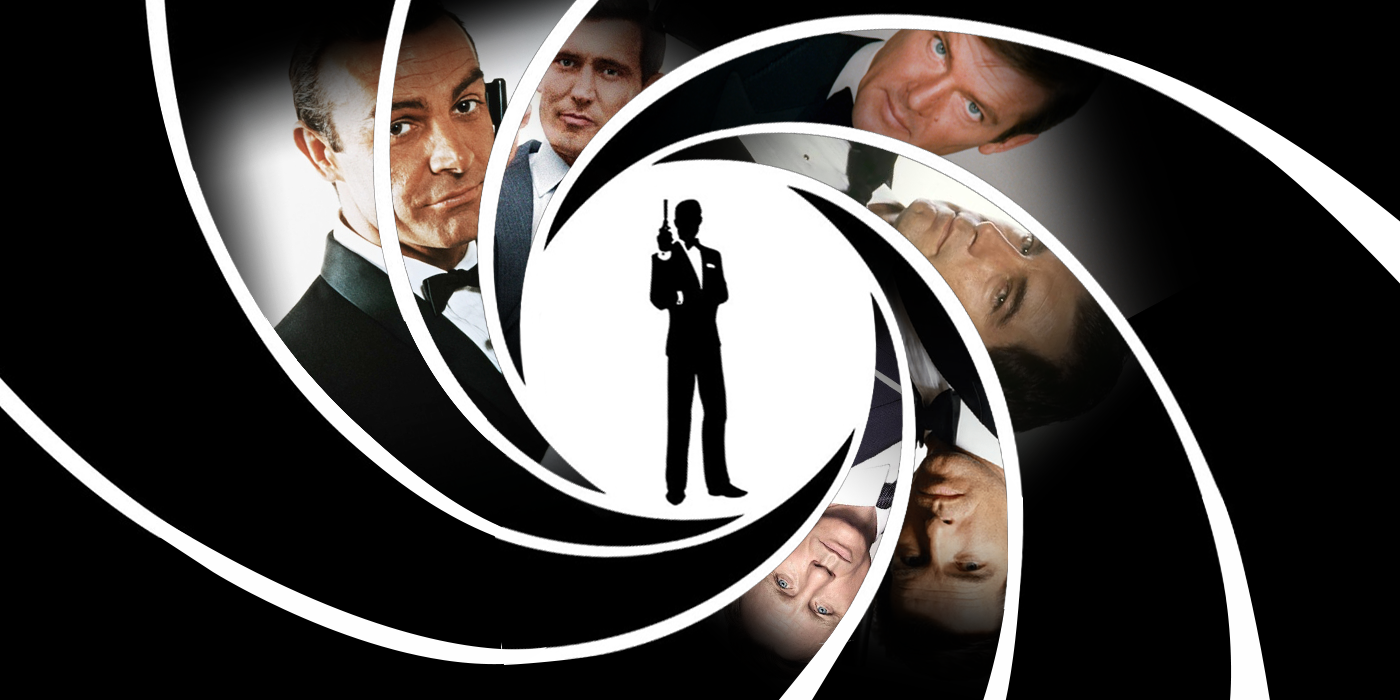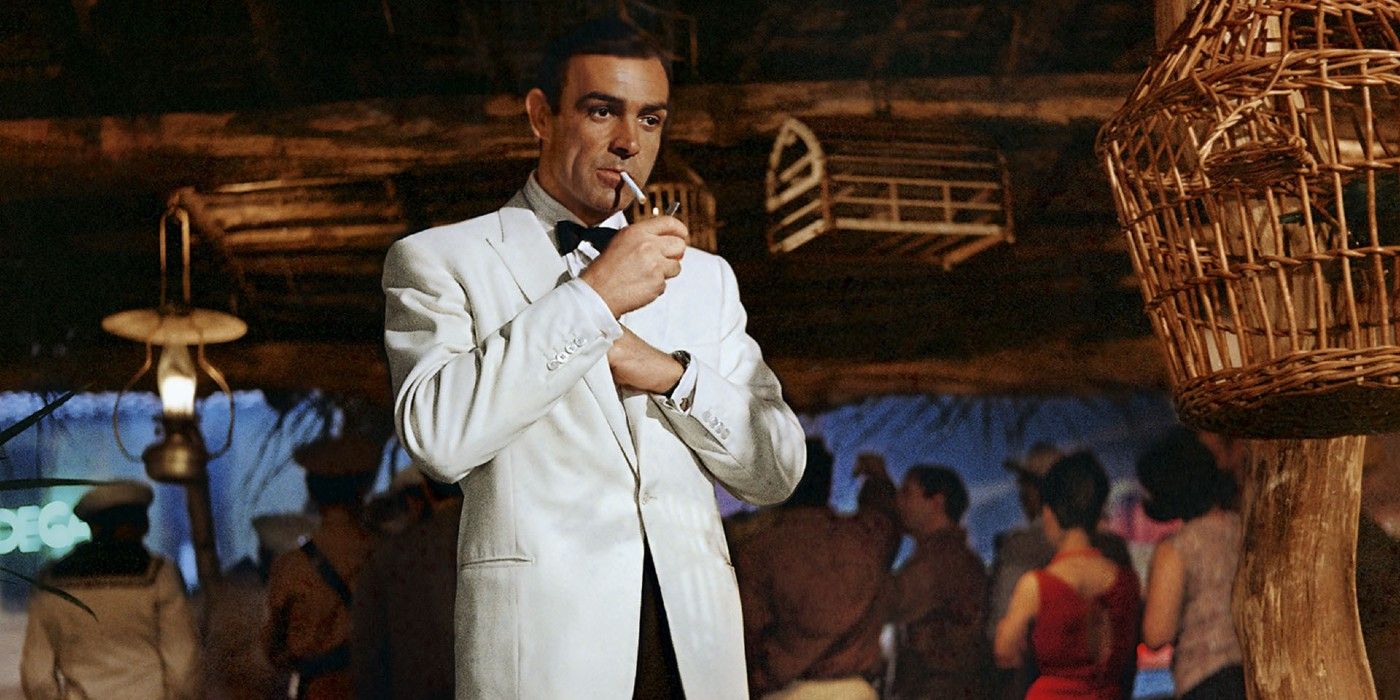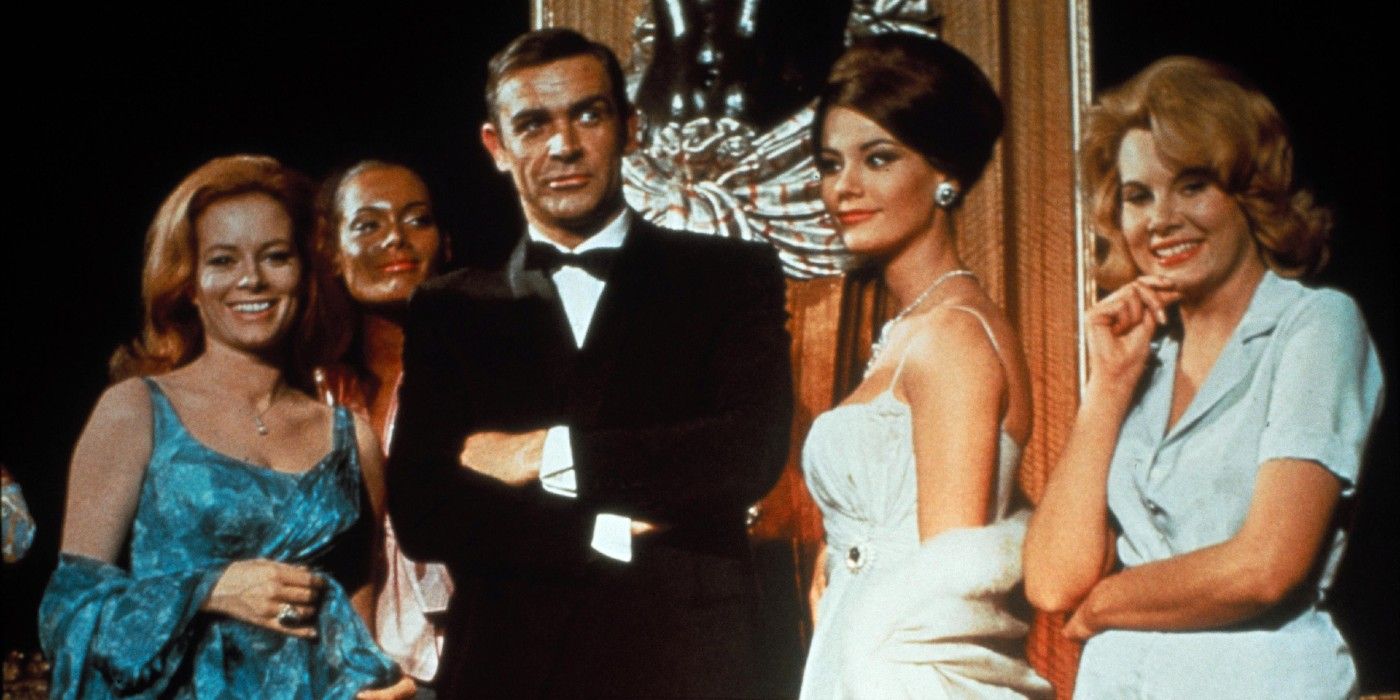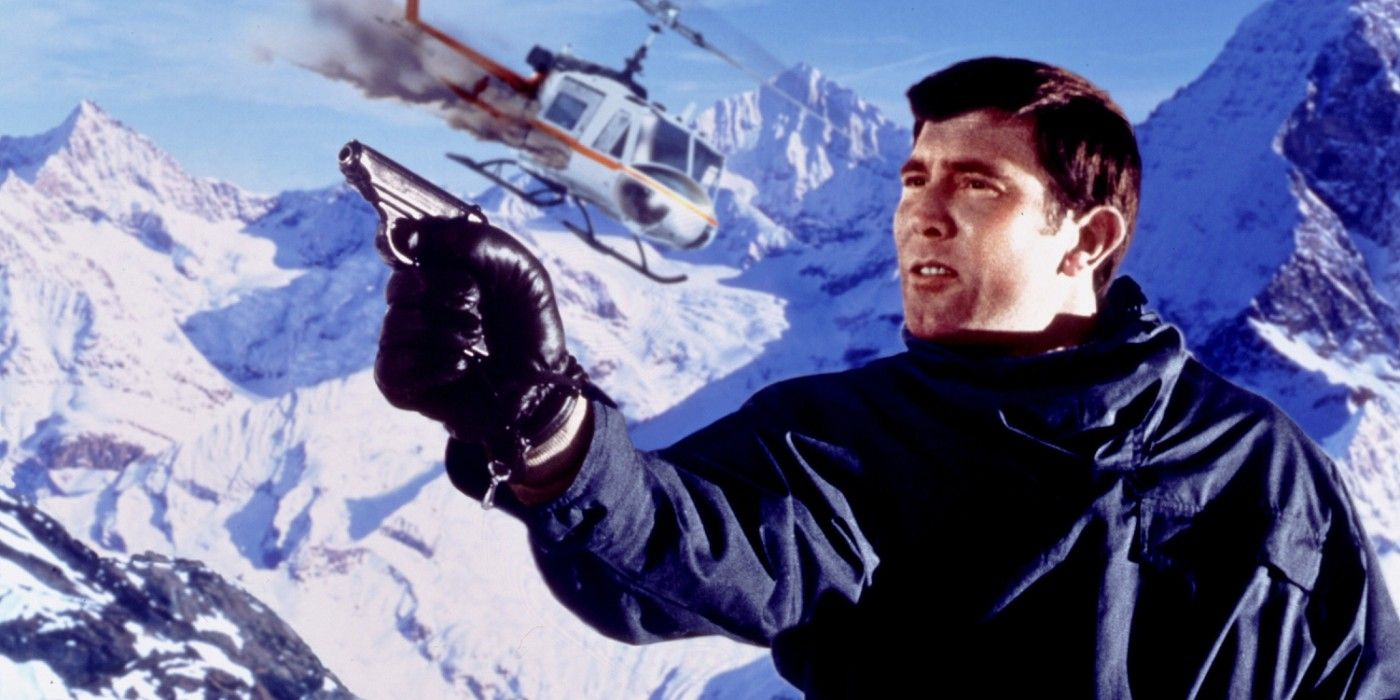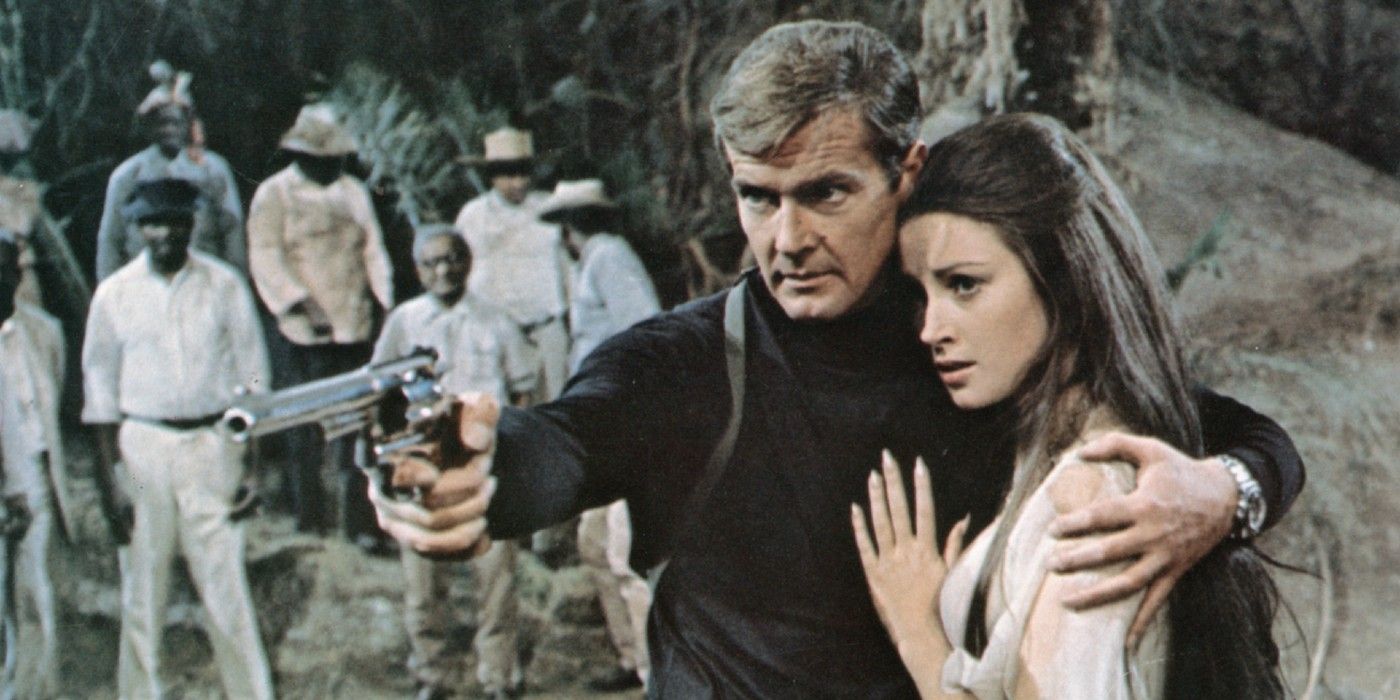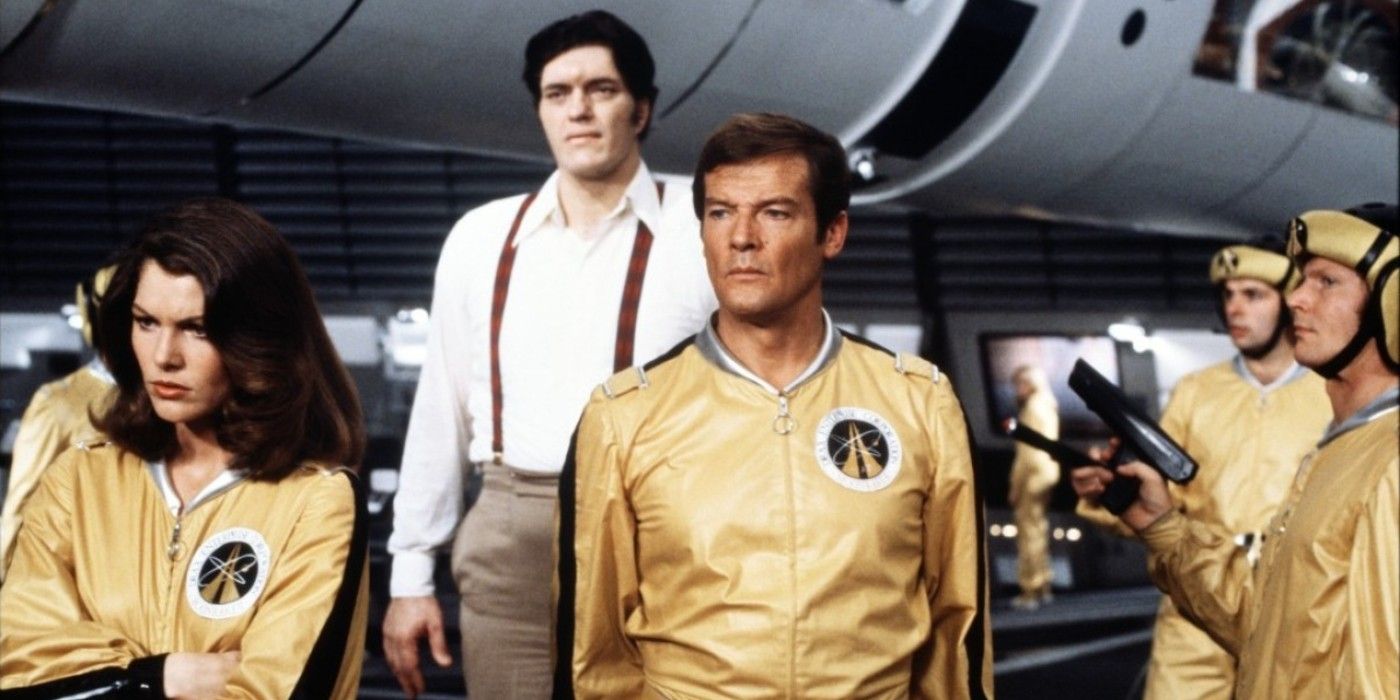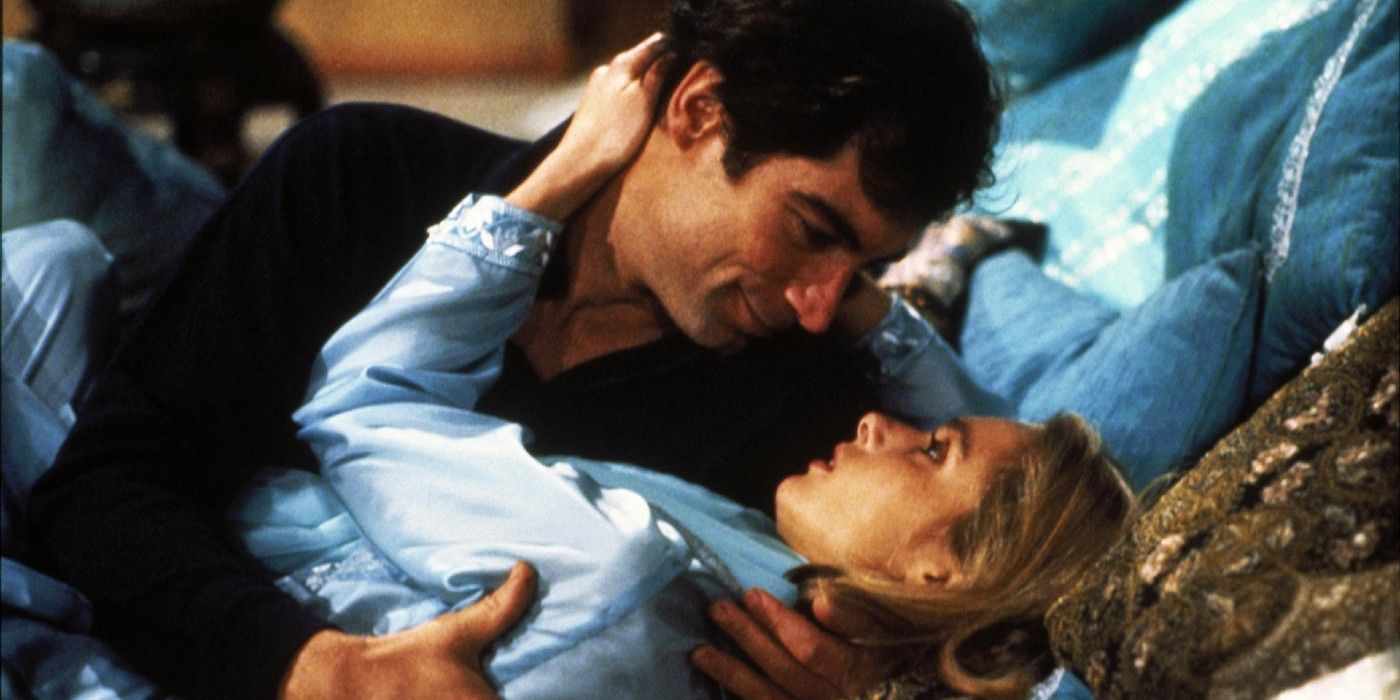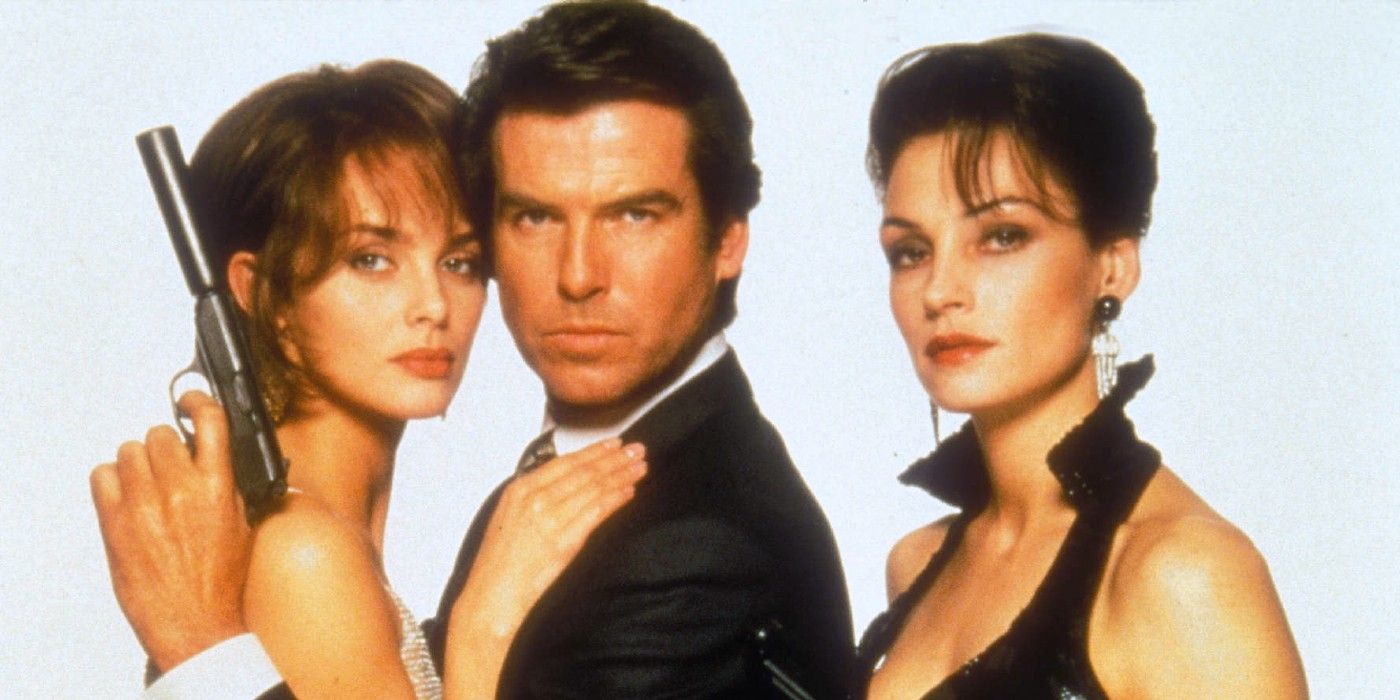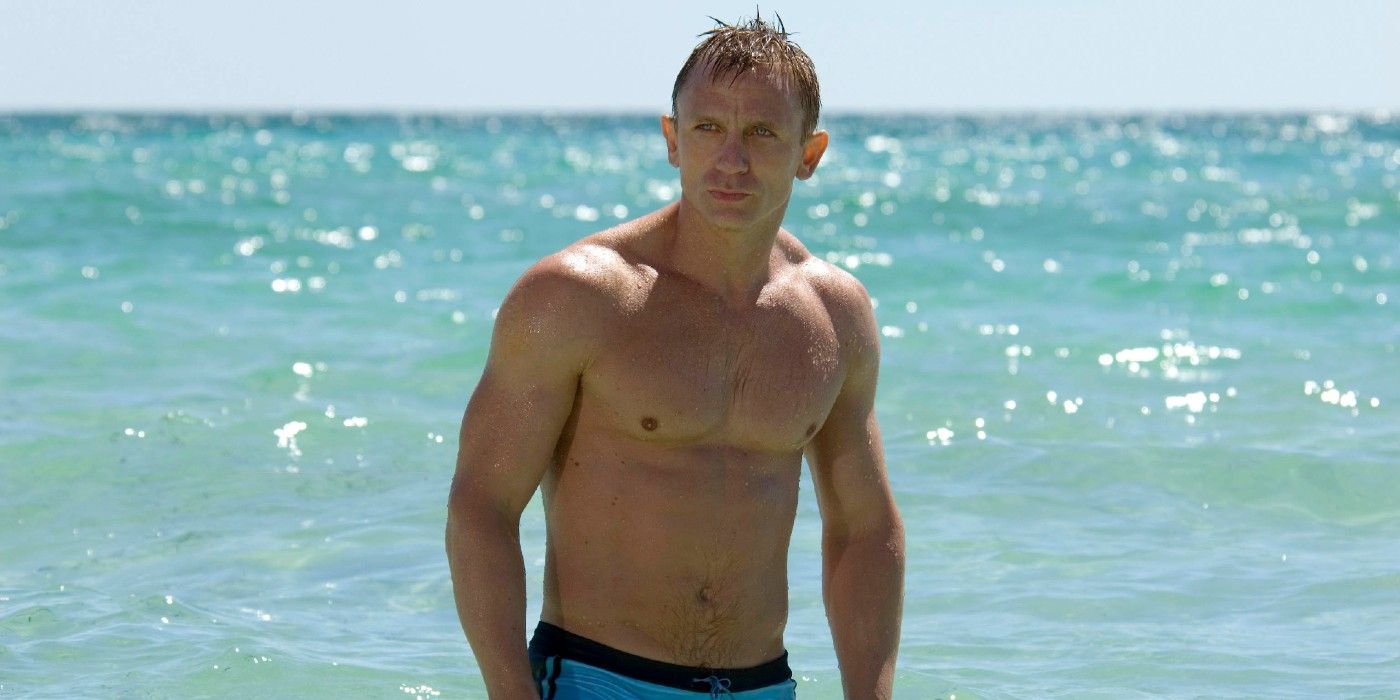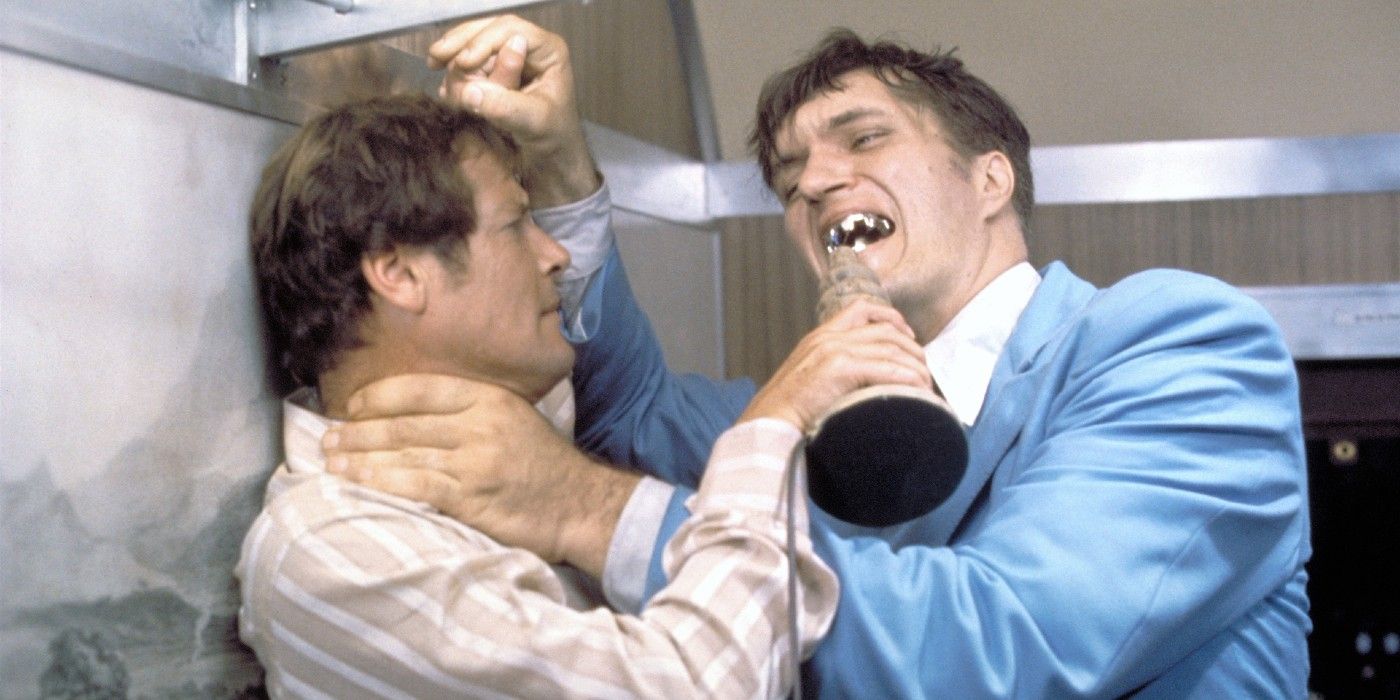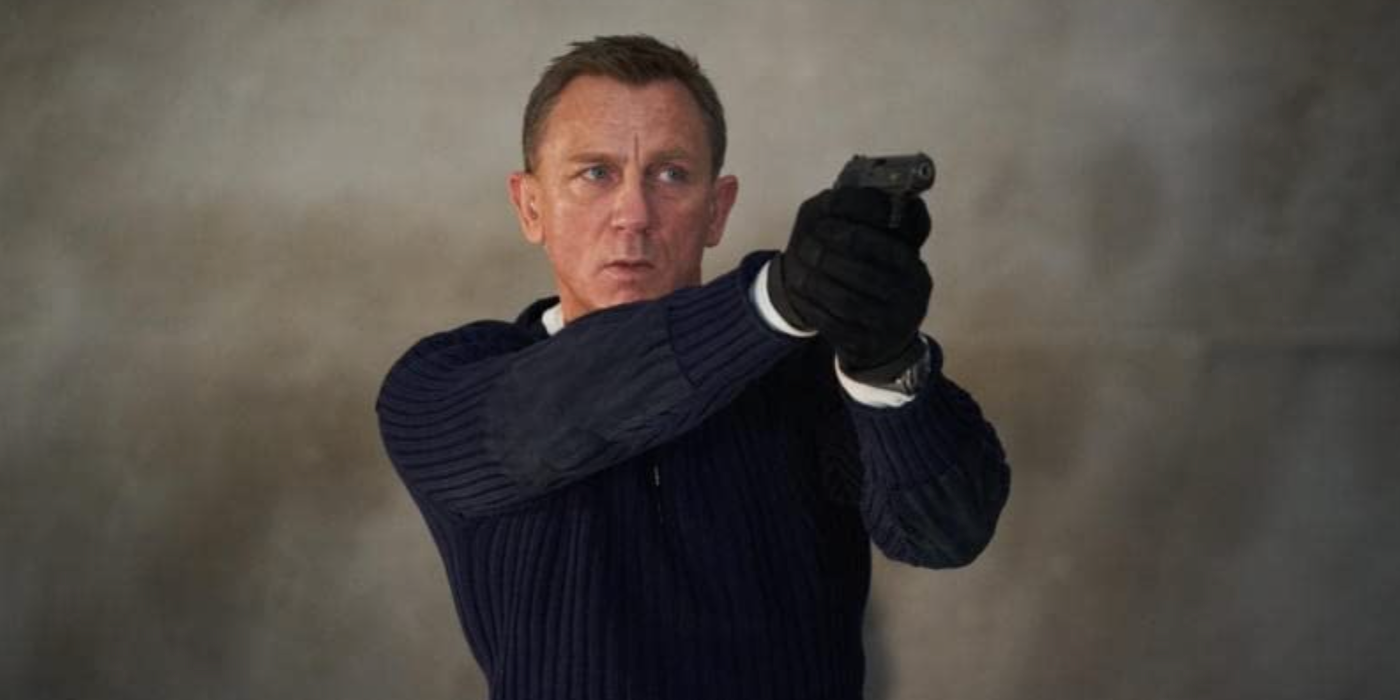Ian Fleming published the first James Bond novel in 1953. The movie adaptations started rolling out nine years later when Dr. No hit cinemas in 1962, and further film exploits of England’s greatest spy have followed almost like clockwork every few years since with the latest entry, 2021's No Time to Die, now available to stream on Amazon Prime Video. Diving into all of them feels like a production as big as a Bond movie itself, but we’ve got you covered.
Most of the 007 films offer episodic, stand-alone adventures that require little knowledge of the previous movies to enjoy, regardless of which installment you’re watching. There’s not much continuity to keep track of, partly because the Bond films employ a floating timeline wherein James Bond moves through the decades without his character aging significantly, and partly because the series tends to at least partially reboot whenever a new actor steps into the role, only preserving a few major story points.
Because of that, we think the best way to navigate the Bond series, which is now well over 20 movies deep with a new installment arriving later this year, is to group the films together according to the actor playing Bond. This is mostly the same as the films’ order by release date, albeit with a few notable exceptions that arose from legal entanglements and contract disputes. Here’s a full breakdown:
James Bond Movies in Chronological Order of Events (by Era)
THE SEAN CONNERY ERA
Scottish actor Sean Connery was the original Bond, and many aficionados of the series still consider him to be the best. His films are largely straight-forward spy affairs with a 1960s flair, and all of them are direct adaptations of one of Fleming’s novels.
Dr. No (1962)
The first Bond film is not an origin story, but rather arrives with Bond already fully formed. He goes up against SPECTRE, a terrorist organization that he’ll battle on and off over the decades to come. Dr. No introduces many James Bond mainstays like M, the head of the British Secret Service, M’s secretary Miss Moneypenny, and CIA Agent Felix Leiter, a recurring Bond ally.
From Russia With Love (1963)
SPECTRE is out for revenge, going after Bond in retaliation for him foiling their plans in the previous film. Robert Shaw (Jaws) plays an assassin hot on Bond’s trail.
Goldfinger (1964)
Bond goes after the titular villain’s gold-smuggling operation, ultimately building up to a thrilling attempted heist at Fort Knox. Goldfinger is the first Bond film to have a theme song with lyrics play over the opening credits (which became a series staple), and it’s also where the series starts to solidify some of its most iconic tropes, including the idea of “Bond girls” as love interests with comically suggestive names and evil henchmen with a hyper-specific gimmick. (In Goldfinger’s case, you get the provocatively named Pussy Galore and the infamous hat-throwing bodyguard Oddjob.)
Thunderball (1965)
Connery’s Bond squares off against SPECTRE again, but this film is almost better known for being the focus of a messy legal dispute between Bond-film producer EON Productions, Fleming and a screenwriter Fleming had previously worked with named Kevin McClory. The lawsuit was settled out of court but will eventually lead to some Bond peculiarities down the road.
You Only Live Twice (1967)
A lot of things from the Connery Bonds have not aged so well, including the rampant misogyny, but Bond disguising himself as a Japanese man in You Only Live Twice might have aged the worst. Still, this movie offers the first true appearance of his longtime nemesis Ernst Stavro Blofield (played by the great Donald Pleasence), the SPECTRE leader who at this point had only been teased in previous installments.
Diamonds Are Forever (1971)
Connery retired from playing Bond after YOLT, but when George Lazenby, the actor who succeeded him, left after a single film, EON lured Connery back. This is yet another movie where Bond faces off against Blofeld, who is now played by Charles Gray and is using plastic surgery to create a bunch of look-alike decoys of himself. Following Diamonds Are Forever, Connery once again stepped away from playing Bond until ...
Never Say Never Again (1983)
Never Say Never Again is an outlier in the James Bond film universe. It wasn’t produced by EON and isn’t counted as part of the official Bond series. Instead, it’s a loose remake of Thunderball, produced by McClory who continued to hold the film rights to that movie’s screenplay. Still, if Connery is your favorite Bond and you’re a true completionist, it’s easy to argue for its inclusion as you go through the franchise.
THE GEORGE LAZENBY ERA
“Era” might be a strong word, as Lazenby, an Australian model and commercial actor with zero previous film credits, only appeared in one Bond film. He stepped in after Connery vacated the role following You Only Live Twice, only to be replaced by a returning Connery two years later. Lazenby’s most notable contribution to the franchise might be the fact that he’s the only actor born outside the British Isles to play the character so far.
On Her Majesty’s Secret Service (1969)
On Her Majesty’s Secret Service might be even more of a stand-alone piece than normal as Lazenby would never return to the franchise. Bond again squares off against Blofeld (now played by Telly Savalas) in a trippy plot about brainwashed women programmed to unknowingly engage in biological warfare at Blofeld’s command. On Her Majesty’s Secret Service is out of continuity with the Connery films – Blofeld doesn’t even recognize Bond at first – but it introduces one key concept to the ongoing Bond universe: Bond gets married … to Diana Rigg! Their union ends in tragedy, but Bond’s wife, Countess Tracy di Vicenzo, is occasionally referenced in later films.
THE ROGER MOORE ERA
When Connery departed for the second time, EON recast Bond with Roger Moore, the star of the 1960s British spy TV series The Saint. The Moore Bonds are known for being lighter and more humorous than the previous installments, and they were also quick to jump on current cinematic trends.
Live and Let Die (1973)
Live and Let Die finds Bond on an adventure in New Orleans and the Caribbean that was partially inspired by the blaxploitation films that were popular at the time. This film also features one of the franchise’s most popular theme songs (“Live and Let Die” by Paul McCartney) and the voodoo occultist Baron Samedi (Geoffrey Holder), one of Bond’s most iconic adversaries.
The Man with the Golden Gun (1974)
Bond tries to track down a secret device that can weaponize solar power while avoiding a megalomaniacal assassin named Scaramanga (Christopher Lee) who has a golden bullet with Bond’s name on it. The Man with the Golden Gun also features Maud Adams as love interest Andrea Anders; Adams would go on to appear as different characters in two more Bond films starring Moore, including playing the title role in Octopussy.
The Spy Who Loved Me (1977)
Arguably the high point of Moore’s tenure as the super spy, The Spy Who Loved Me teams Bond up with the lovely KGB agent Anya Amasova (Barbara Bach), A.K.A. Agent Triple X, as they attempt to retrieve stolen nuclear submarines. The Spy Who Loved Me is also the first appearance of the metal-mouthed henchman Jaws (Richard Kiel), possibly the most iconic Bond villain next to Blofeld.
Moonraker (1979)
Moonraker was not-so-affectionately dubbed “Bond in Space” by fans and critics at the time of its release. Star Wars was all the rage, you see, so EON concocted a Bond film that ends with a finale aboard an orbiting Space Shuttle that’s a stretch even for Bond movies. Kiel returns as Jaws for the second and final time, exiting the franchise in an escape pod with a bottle of champagne and his new girlfriend Dolly (Blanche Ravalec).
For Your Eyes Only (1981)
Bond movies love winter sporting events – skiing, bobsledding, and snowboarding are all fair game in these things. For Your Eyes Only stands above the rest with a frantic chase on a biathlon course and some ice-hockey action to boot! Meanwhile, an unnamed villain clearly intended to be Blofeld is unceremoniously killed by Bond in a humiliating fashion during the pre-title sequence. (The rights to the Blofeld character were wrapped up in a legal dispute at the time, hence this impressively petty display.)
Octopussy (1983)
Bond’s fellow Double-O agents regularly appear or are referenced throughout the franchise. Octopussy kicks off with the death of 009 before turning into a story about stolen treasure involving a beautiful jewel smuggler (Adams) and a villainous prince (Louis Jourdan). In addition to sporting the franchise’s most suggestive title, this film is also infamous for a sequence in which Bond has to disguise himself as a clown to intercept a bomb at a circus.
A View to a Kill (1985)
Moore was 57 years old by the time he got to this, his final Bond film, and it shows. Still, A View to a Kill has plenty going for it, including Christopher Walken hamming it up as a genetically engineered super-villain and the final performance of Lois Maxwell as Moneypenny. (Maxwell had played the part since Dr. No.) Also, Grace Jones appears as badass Bond girl May Day.
THE TIMOTHY DALTON ERA
With Moore departing the role, Bond producers initially turned to Pierce Brosnan to pick up the Walther PPK pistol. However, Brosnan was currently starring on the TV series Remington Steele and was unable to get out of his contract. So Timothy Dalton donned the tuxedo instead and gave Bond a gravitas that had been missing since the early Connery installments.
The Living Daylights (1987)
Bond is tasked with helping a former Soviet general (Jeroen Krabbé) defect to the West, but 007 soon gets tangled up in an elaborate weapons-smuggling operation involving an unscrupulous American arms dealer (Joe Don Baker) and a beautiful concert cellist (Maryam d'Abo). Baker would later portray CIA agent Jack Wade in GoldenEye and Tomorrow Never Dies.
License to Kill (1989)
After his longtime friend and ally Felix Leiter (David Hedison) is mutilated and left for dead by an evil drug lord named Sanchez (Robert Davi), Bond goes rogue to take down Sanchez’s entire operation from within. Along the way, he crosses switchblades with a young Benicio Del Toro and (checking my notes) … Las Vegas legend Wayne Newton?!
THE PIERCE BROSNAN ERA
After License to Kill, EON took six years to get the next movie off the ground, as well as sort out some brand new legal problems. By the time they were ready to roll, Dalton was out and Pierce Brosnan was finally free to take the role as originally intended. During Brosnan’s run, the franchise evolved into modern-day blockbusters, with bigger stunts, bigger set pieces, bigger budgets and bigger box-office grosses.
GoldenEye (1995)
Times had changed. The Soviet Empire had collapsed, and sexual politics had evolved past the prehistoric treatment of women in Connery’s era. GoldenEye smartly tackled these issues head-on, giving us a more modern Bond who reports to the series’ first female M, played by Judi Dench. In the film, Bond has to stop his former friend and fellow Double-O agent Alec Trevelyan (Sean Bean) from wiping out London with an EMP satellite. Incidentally, this is also the first Bond film not based on a Fleming novel.
Tomorrow Never Dies (1997)
Remember newspapers? They used to be a thing. Anyway, here Bond battles a media tycoon (Jonathan Pryce) who plans to use international tensions to manufacture a war just to boost his sales and TV ratings. The great Michelle Yeoh co-stars as a Chinese spy who teams up with Bond to prevent their nations from going to war.
The World is Not Enough (1999)
Bond is assigned to protect the daughter of an ex-KGB agent who literally cannot feel pain, and Denise Richards plays a nuclear physicist named Christmas Jones. The World is Not Enough is most notable for featuring the final performance of Desmond Llewelyn as Q, Bond’s long-suffering gadget guru. Llewelyn played the part in 17 total Bond films and was succeeded in this film by John Cleese’s R.
Die Another Die (2002)
By the time Brosnan’s final outing as Bond rolled around, things had just gotten absolutely wild. Die Another Day features a car that turns invisible, gene-therapy technology that completely changes a person’s face, and Madonna in a brief cameo as a fencing teacher. (Yes, that Madonna.)
THE DANIEL CRAIG ERA
That brings us to the most recent Bond era. Most Bond actors get sort of a soft reboot of the franchise when they come on board, but with Daniel Craig the franchise opted for a total reboot to start the series from scratch. (Although there are still a few holdovers, primarily Dench’s continuing presence as M.) Craig’s Bonds are largely seen as more serious spy thrillers in the vein of the Connery and Dalton installments, but they also carry over the blockbuster spectacle of the Brosnan films.
Casino Royale (2006)
An excellent origin story that opens with Bond earning his license to kill and ends with Bond fully becoming the character we all know and love, Casino Royale was helmed by GoldenEye director Martin Campbell. (Campbell is apparently the go-to guy to reinvent James Bond for a new generation of cinema-goers.) In between, there’s a whole bunch of poker and a deliciously villainous performance from Mads Mikkelsen as terrorist bankroller Le Chiffre.
Quantum of Solace (2008)
Quantum of Solace is narratively a direct sequel to Casino Royale, a rarity in the Bond franchise that would become more normalized during Craig’s tenure in the role. Bond avenges the death of his lover Vesper Lynd (Eva Green) at the end of the previous film and investigates a SPECTRE-esque organization named Quantum.
Skyfall (2012)
Skyfall borrows a few elements from GoldenEye and The Dark Knight to create what is, to date, the most successful James Bond movie of all time. A deranged ex-MI6 agent named Silva (Javier Bardem) targets M (Dench) as part of a personal vendetta, with the action culminating in a cat-and-mouse game at Bond’s childhood home. Moneypenny is re-introduced as a field agent, played by Naomie Harris, who works alongside Bond.
Spectre (2015)
SPECTRE is back for the first time since the ignominious defeat of “Blofeld” at the beginning of For Your Eyes Only, and – surprise! – Blofeld returns too (now played by the always great Christoph Waltz). With the decades-spanning legal battles now behind them, EON pulls out all their old toys for Craig to play with, revealing that SPECTRE was secretly behind all the evil deeds of the previous three films. Bond also faces troubling revelations about his relationship to Blofeld, which makes their rivalry all the more personal.
No Time to Die (2021)
Craig's well-publicized final turn in the role of Bond, No Time to Die pits his 007 against Rami Malek's villainous Lyutsifer Safin, a disfigured scientist who's looking to take down both SPECTRE and Bond. Léa Seydoux reprises her role as Madeleine Swann, Bond's love interest from Spectre, who proves to be an enduring presence in his life. As do a lot of nanobots.
James Bond Movies in Order of Release
If you prefer to tackle the Bond franchise in theatrical order, here are all 25 films by order of release date.
Dr. No (1962)
From Russia With Love (1963)
Goldfinger (1964)
Thunderball (1965)
You Only Live Twice (1967)
On Her Majesty’s Secret Service (1969)
Diamonds are Forever (1971)
Live and Let Die (1973)
The Man with the Golden Gun (1974)
The Spy Who Loved Me (1977)
Moonraker (1979)
For Your Eyes Only (1981)
Octopussy (1983)
Never Say Never Again (1983)
A View to a Kill (1985)
The Living Daylights (1987)
License to Kill (1989)
GoldenEye (1995)
Tomorrow Never Dies (1997)
The World is Not Enough (1999)
Die Another Day (2002)
Casino Royale (2006)
Quantum of Solace (2008)
Skyfall (2012)
Spectre (2015)
No Time to Die (2021)
The Future
And, for now, that’s the complete list! Sure, you could get really crazy and watch the 1967 version of Casino Royale, a James Bond parody starring David Niven, or seek out the kid-friendly James Bond Jr. animated series from the 1990s. But, realistically, these 25 films have you covered.
And while No Time to Die gives Craig's version of Bond a definitive ending, there's no doubt the character will continue on, especially considering Amazon acquired MGM for $8.5 billion in May 2021. Though the company has denied streaming or series plans for the character, between the final Craig film and a new franchise owner, there's no doubt a new era of Bond will hit the big screen sooner rather than later.

